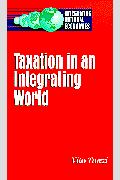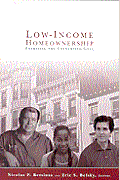What’s the latest thinking in fiscal and monetary policy? The Hutchins Roundup keeps you informed of the latest research, charts, and speeches. Want to receive the Hutchins Roundup as an email? Sign up here to get it in your inbox every Thursday.
Free Pre-K increases labor force participation of mothers
In 2019, 76% of 25-54-year-old women were in the labor force compared to 89% of men, largely because many women were taking care of their children instead of working. Exploiting variation in free Pre-K eligibility rules across all U.S. states, Elias Ilin, Samantha Shampine, and Ellyn Terry from the Federal Reserve find that free Pre-K programs increase the labor force participation rate of mothers with one child aged 3 or 4 by 2.3 percentage points, on average. In particular, free Pre-K leads to a 4.2 percentage point increase in the labor force participation of mothers with a college degree and a 2.6 increase for mothers living in metropolitan areas but has no effect on unmarried mothers or mothers living in rural areas. Moreover, they observe significant effects among mothers with income either below 200% or above 400% of the Federal Poverty Level.
Over-valuing of inexpensive houses by tax assessors leads to regressive property tax rates
Owners of inexpensive single-family houses pay on average 50% higher effective property tax rates than owners of expensive houses within the same tax code area and year under the same statutory property tax, because inexpensive houses are over-assessed relative to expensive houses, finds Natee Amornsiripanitch of the Philadelphia Fed. The author shows that about 40% of this over-assessment is due to infrequent reappraisals of home value, which can lead to under-taxation of houses that experience large price increases in the interim. The other 60% can be attributed to flawed home valuation methods. As a result, houses in the bottom tenth of the house price distribution pay an excess $234 in property taxes, about a third of this group’s median tax bill, while houses in the top 1% underpay by $1,505, about 6% of their median tax bill. Amornsiripanitch finds that reforming home valuation methods could increase the median poor homeowner’s wealth by over 10%, making a significant dent in wealth inequality.
Reduced contraceptive access led to smaller-than-anticipated drop in births
U.S. birth rates were predicted to decline sharply due to the COVID-19 pandemic as more women (particularly those who were low-income or racial minorities) reported delaying their childbearing plans amid the economic uncertainty. Martha J. Bailey of the University of California, Los Angeles, and Vanessa Wanner Lang and Lea J. Bart of the University of Michigan find that the decline in the birth rate among low-income women in 2021 was smaller than predicted because of reduced access to medical contraceptives over the pandemic. Using Planned Parenthood appointment and contraceptive-use data on low-income, uninsured women in Michigan over the August 2018-March 2020 period, the authors find that each Planned Parenthood visit was associated with patients using contraceptives that, on average, reduced pregnancies by 8%. COVID-19 restrictions reduced access to such appointments, thereby boosting pregnancies and births, the authors find, and causing the birth rate to decline a modest 1.1% overall for low-income women in 2021. The findings imply that “already disadvantaged families disproportionately affected by the COVID-19 economy will not experience a large baby bust but an increase in unplanned births,” the authors conclude.
Chart of the week: Increase in adults not working due to coronavirus sickness
Chart courtesy of the Wall Street Journal
Quote of the week:
“Current statutory and regulatory frameworks do not provide consistent and comprehensive standards for the risks of stablecoins as a new type of payment product. Certain regulatory schemes may have the flexibility to address some issues presented by stablecoins, such as illicit finance. However, stablecoins are not subject to standards to address concerns about run risk, payment system risk, or concentration of economic power. Some of the largest stablecoin issuers operate with limited regulatory oversight, raising significant questions about whether these stablecoins are adequately backed and other aspects of their operations,” says Nellie Liang, Under Secretary for Domestic Finance.
“The regulatory frameworks that apply to stablecoin issuers and service providers are inconsistent, creating opportunities for regulatory arbitrage and uncertainty among stablecoin users. Even where the issuer of a given stablecoin is subject to oversight, the number of different key parties that may be involved in an arrangement, and the operational complexity of these arrangements, may pose substantial challenges for supervisors. The exponential growth of stablecoins – from a market capitalization of roughly $5 billion at the start of 2020 to approximately $175 billion today – increases the urgency of ensuring that an appropriate regulatory framework is in place.”
The Brookings Institution is financed through the support of a diverse array of foundations, corporations, governments, individuals, as well as an endowment. A list of donors can be found in our annual reports published online here. The findings, interpretations, and conclusions in this report are solely those of its author(s) and are not influenced by any donation.
The Brookings Institution is committed to quality, independence, and impact.
We are supported by a diverse array of funders. In line with our values and policies, each Brookings publication represents the sole views of its author(s).












Commentary
Hutchins Roundup: Working mothers, property taxes, and more
February 10, 2022